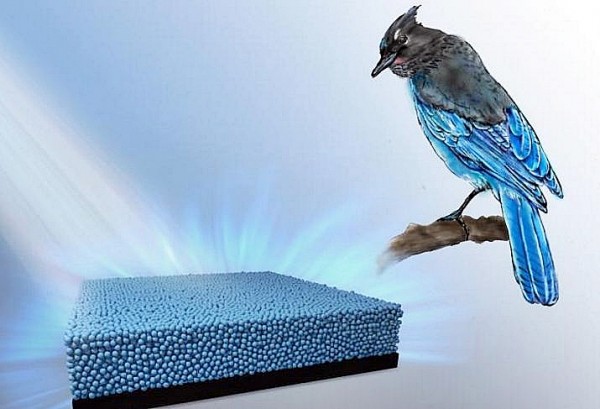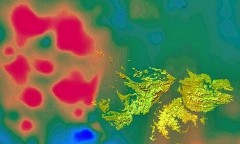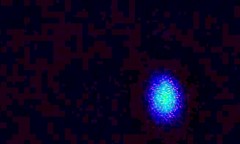By Arthur Dominic J. Villasanta , | May 08, 2017

A bio-inspired bright structurally colored colloidal amorphous array enhanced by controlling thickness and black background.
A Nagoya University-led research team has developed new ways to control how light interacts with materials after mimicking the rich colors of bird plumage.
Bright colors in the natural world often result from tiny structures in feathers or wings that change the way light behaves when it's reflected. This "structural color" is responsible for the vivid hues of birds and butterflies.
Like Us on Facebook
Artificially harnessing this effect can allow scientists to engineer new materials for applications such as solar cells and chameleon-like adaptive camouflage.
Inspired by the deep blue coloration of "Stellar's jay," a native North American bird, a team at Nagoya University reproduced the bird's color in their lab, giving rise to a new type of artificial pigment.
"The Stellar's jay's feathers provide an excellent example of angle-independent structural color," said Yukikazu Takeoka, who co-wrote the study published in Advanced Materials.
"This color is enhanced by dark materials, which in this case can be attributed to black melanin particles in the feathers."
In most cases, structural colors appear to change when viewed from different perspectives.
The difference in Stellar's jay's blue is that the structures, which interfere with light, sit atop black particles that can absorb a part of this light. This means that at all angles, the color of the Stellar's Jay does not change however you look at it.
The team used a "layer-by-layer" approach to build up films of fine particles that recreated the microscopic sponge-like texture and black backing particles of the bird's feathers.
To mimic the feathers, researchers covered microscopic black core particles with layers of even smaller transparent particles to make raspberry-like particles. The size of the core and the thickness of the layers controlled the color and saturation of the resulting pigments. The color of these particles did not change with viewing angle.
"Our work represents a much more efficient way to design artificially produced angle-independent structural colors," said Takeoka.
"We still have much to learn from biological systems, but if we can understand and successfully apply these phenomena, a whole range of new metamaterials will be accessible for all kinds of advanced applications where interactions with light are important."
-
Use of Coronavirus Pandemic Drones Raises Privacy Concerns: Drones Spread Fear, Local Officials Say

-
Coronavirus Hampers The Delivery Of Lockheed Martin F-35 Stealth Fighters For 2020

-
Instagram Speeds Up Plans to Add Account Memorialization Feature Due to COVID-19 Deaths

-
NASA: Perseverance Plans to Bring 'Mars Rock' to Earth in 2031

-
600 Dead And 3,000 In The Hospital as Iranians Believed Drinking High-Concentrations of Alcohol Can Cure The Coronavirus

-
600 Dead And 3,000 In The Hospital as Iranians Believed Drinking High-Concentrations of Alcohol Can Cure The Coronavirus

-
COVID-19: Doctors, Nurses Use Virtual Reality to Learn New Skills in Treating Coronavirus Patients











